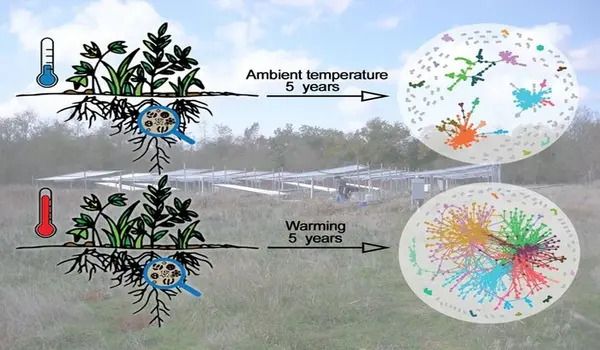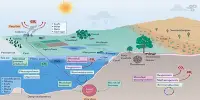The basic peat bog conjures our thoughts of a drab, wet expanse. However, it turns out to be a superpower in the fight against climate change. For thousands of years, the world’s peatlands have absorbed and stored massive volumes of CO2, keeping this greenhouse gas in the ground rather than in the air. Although peatlands account for only 3% of the global land area, they play an enormous role in carbon storage, storing twice as much as all of the world’s forests combined.
The fate of all that carbon remains unknown in the face of climate change. A recent study reveals that the future of this critical carbon sink may be influenced, at least in part, by small species that are frequently neglected.
The majority of the carbon in peatlands is locked up in the spongy layers of dead and living mosses that cover the ground. The chilly, wet, and oxygen-starved circumstances make it difficult for plants to degrade. This keeps the carbon they consume during photosynthesis locked up in the soil rather than escaping into the atmosphere. But rising global temperatures are drying off peatlands, transforming them from carbon sinks to potential carbon sources.
The findings demonstrate that an overlooked component of the peatlands’ microbial food web is also vulnerable to climate change, in ways that are currently not accounted for in models that predict future warming.
Jean Philippe Gibert
In a study published in the journal Global Change Biology, a team led by Duke biology professor Jean Philippe Gibert and PhD student Christopher Kilner investigated the impact of climate change on protists, little animals that live amid bog mosses.
Not only are protists abundant — collectively, they weigh twice as much as all the animals on the planet — they also play a role in the overall movement of carbon between peatlands and the atmosphere. That’s because as protists go about the business of life — eating, reproducing — they suck in and churn out carbon too.
Some protists draw in CO2 from the air to fuel their growth. Other protists are predators, gobbling up nitrogen-fixing bacteria the peatland mosses rely on to stay healthy. In a bog in northern Minnesota, researchers led by Oak Ridge National Laboratory have built 10 open-topped enclosures, each 40 feet across, designed to mimic various global warming scenarios.

The enclosures are controlled at different temperatures, ranging from no warming all the way up to 9 degrees Celsius warmer than the surrounding peatland. Half of the enclosures were grown in normal air. The other half were exposed to carbon dioxide levels more than two times higher than today’s, which we could reach by the end of the century if the burning of fossil fuels is left unchecked.
Five years after the simulation experiment began, the Duke team was already seeing some surprising changes. “The protists started behaving in ways that we didn’t expect,” Kilner said. At current CO2 levels, most of the more than 200,000 protists they measured became more abundant with warming. But under elevated CO2 that trend reversed.
Furthermore, the combined impacts of warming and increasing CO2 caused a shift in the protists’ eating patterns and other attributes known to determine how much CO2 they emit during respiration, or how much they contribute to climate change. It is uncertain what such changes might entail for peatlands’ future potential to resist climate change, but they are likely to be significant.
Overall, the findings demonstrate that an overlooked component of the peatlands’ microbial food web is also vulnerable to climate change, in ways that “are currently not accounted for in models that predict future warming,” according to Gibert.
















